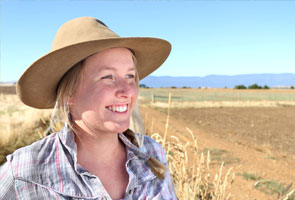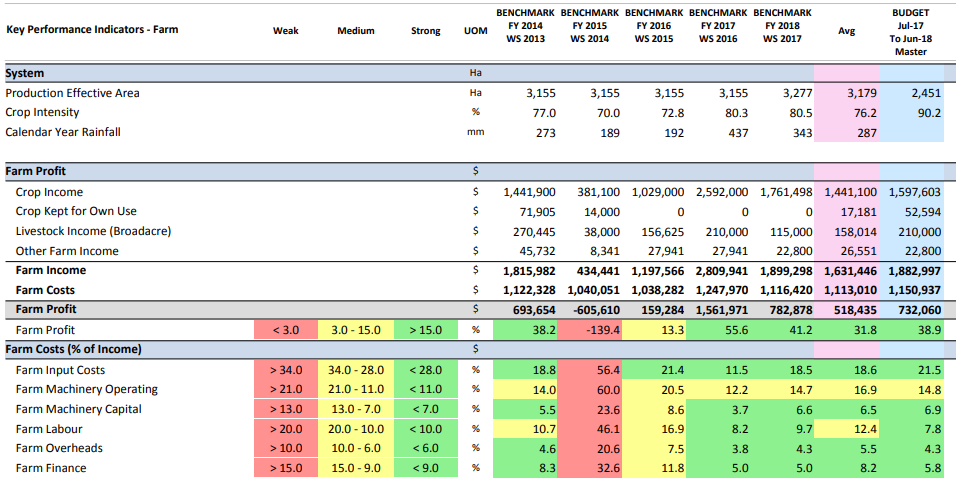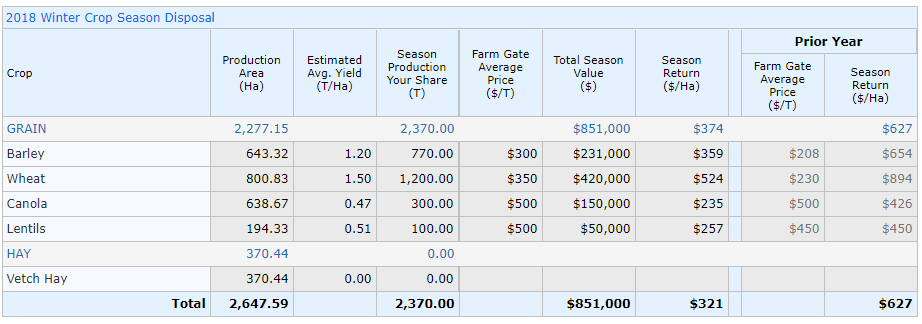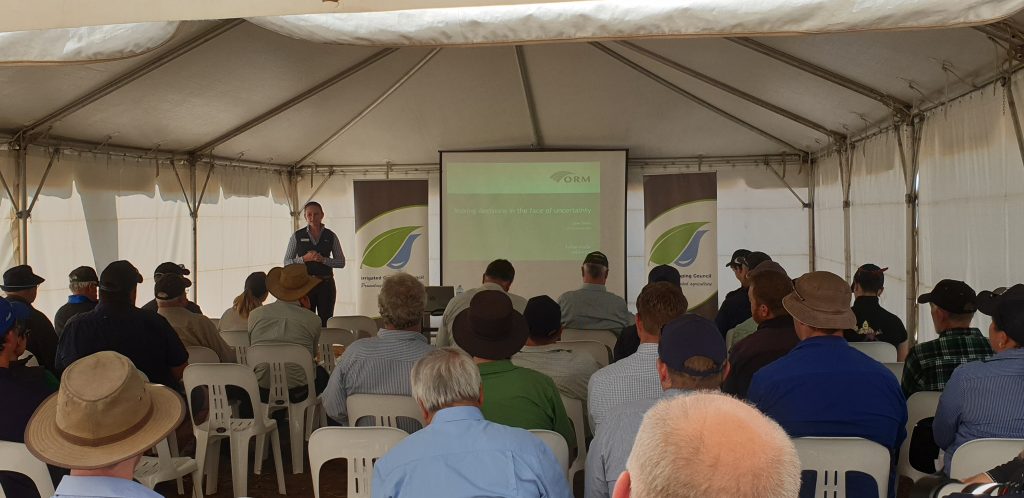A message from Phil
Making farm business decisions in the face of uncertainty
Motivating & Managing labour effectively
Business Reviews
Update on happenings at ORM
A Message from Phil
While growers get going with harvest, the ORM team are busy planning the next round of grower and advisor events, in early 2020. So our goal, is to help the industry stay informed of new initiatives and opportunities. This is why we research and talk to others in the industry to gather the most relevant materials.
Some topics being considered for delivery at events next year include:
- Managing public perceptions to reduce ‘trial by public opinion’
- Building a constructive and positive culture within the family business
- The return of pastures to crop rotations
- Impact of trade wars and sanctions on grain prices
- Plant proteins as an alternative to meat
- Building sustainable carbon pools
- Taking a profit first approach
If you’ve got ideas and would like to share them, the ORM team would appreciate hearing from you.
Contact Us : with your feedback
What’s news?
- Mallee/Wimmera/Central hay yields are excellent, up to 11 tonnes/ha of oaten at No1 grade
- New machinery often comes with new technology, i.e. new hay balers have double the capacity
- Drought declared areas have access to infrastructure grants
- If you’re looking at a big harvest, contractors are available
Making farm business decisions in the face of uncertainty
by Jane Foster, ORM Agribusiness Consultant.
I was recently asked to speak about the challenges that are faced while making decisions, when there is a high degree of uncertainty about the future. Making decisions when the future feels or looks uncertain, diminishes our confidence and increases anxiety or stress about the outcome. Below are some practical tips for decision making in these circumstances;
Tips on decision making when the future is uncertain
- Reduce the time horizon for decisions 3-5 versus 5-10 year timeframes.
- Become more informed, knowledge has a habit of reducing uncertainty.
- Defer the risks within your control when uncertainty is high.
- Avoid emotional risk taking – risk taking should be based on clear, calm and rational thought.
To make decisions which are for the longer term and/or are more difficult to implement and exit, one of the key goals prior to confirming a decision should be to eliminate as much uncertainty as possible. And this can be achieved by using discipline in the deliberation process and a clear approach to the issue.
How to reduce uncertainty
Take a view on how the future will evolve in your industry ….
What are likely to be the key forces that shape the industry over the next 3 – 5 , 5- 10 years. But predicting this is the difficult part, engaging with industry representatives and your network of advisers will help in this step.
Identify what success is for your business …
Articulate the key milestones and goals that you would like to achieve over the next 3-5 years and beyond. Then stay focused on these as you make and implement your decision.
Explore your available options that support the business in achieving these goals….
This could be a diversified business strategy, adoption of new technology/automation or a focus on cost control. What will you be required to do, to move the business in the direction required.
Quantify the costs and benefits of alternatives if there are more than one….
Outline the likely investment that will be required to implement the action. Do assets need to be acquired or liquidated? Can management readily adapt the business? Would specialist expertise be required?
Assess if the change is realistically achievable define a timeline to implement the change…..
Are there significant hurdles which will be difficult to overcome. Compare this against “maintaining status quo”. Which is the most feasible option in the current circumstances?
Make a decision, then make a plan for implementation……
Understand the risks involved and have a plan to deal with them should they eventuate. This is key to reducing uncertainty. So consider utilising external expertise at this step to help with the assessment of risk and the planning to manage it.
Review the outcomes and the implementation process……
Did the outcome achieve our initial expectations? What do we need to keep working on? What worked well and why?
Taking the required time to plan and implement a significant change in your farm business will be a productive investment. By decreasing the feelings of uncertainty, we improve our confidence in the decision-making process. As a farmer you cannot avoid making decisions, so it is a good option to approach them with clear thinking and a rational plan to reduce some of the stress.
Back to Top
 |
We look at how to motivate and manage the labour force effectively |
The specific requirements of labour management will vary over time. You will typically move between the key stages of sourcing labour, retaining labour, motivating labour and managing performance. Compliance with the legislative requirements of Awards and Agreements, is the foundation of HR management in all business enterprises. However compliance does not directly influence the level of performance of managers and employees. As with all aspects of running a farm business, managing employees requires specific skills and the implementation of some general processes. The goal is to create a working environment for farm employees to be efficient and effective in their roles.
Employees can be most effective when;
-
Their role has clear definition and they understand what is expected – eliminate micro-management.
This enables staff to be productive even if you are occupied elsewhere, because they have clear direction on the order and priority of tasks.
-
Management engages in clear and consistent communication – lead by example.
If your communication is currently ineffective, initiate structures that implement a consistent approach. A weekly tool-box meeting could be a starting point.
-
Under-performance is addressed effectively – this may result in more training or changes to systems.
An under-performing employee can erode the morale of the work force if they are not managed appropriately.
-
There is an inclusive attitude – their feedback is acknowledged and valued.
Feedback may not always be implemented, this is ok but explain why it was not. And if staff are not providing any feedback this should serve as a red flag.
-
Offer incentives which reward the behaviours which are most highly valued by you.
Cash incentives are just one mechanism. Providing additional hours of leave may be of more benefit to the employee, or sharing in participation at industry events.
The most critical competency is, without a doubt, effective communication. But don’t be misled that effective communication requires a lot of talking. As it actually requires clear and consistent directives which are supported by actions.
Benefits to your bottom line
The long-term benefit of taking the time to manage staff in a positive way is that staff retention makes good financial sense. The cost of replacing an employee on an hourly rate of $30 per hour, in a business with less than 5 employees, is approximately $20,000 per employee (Business Victoria Staff Turnover Calculator). Quantifying the direct and indirect costs attributed to the recruitment and training phase of employing someone new, provides a strong business case for improving retention.
ORM works with many clients to provide support to their HR Management. This includes drafting of employment contracts, facilitating employee reviews and follow up. As well as support to the farm to manage compliance of their HR obligations. We are available to discuss individual issues or address broader business requirements.
Read more about sourcing skilled seasonal labour
Back to Top
Business Review Season 2020 – a time to reflect and prepare.
While our clients are busy finishing hay and getting ready for harvest. It is also a busy time at the ORM office preparing for our business review season. Each year we analyse our clients’ business performance and reflect on their past season results, while planning for the upcoming year. To do this we use AgProfit, a cloud-based program which allows us to record harvest results, rainfall and financial performance. It is this historical data that helps us set realistic income targets when budgeting, and pinpoint areas in the business that are thriving or require greater focus.
During the Annual Business Review meetings we measure benchmarks to provide feedback and advice, on cost to income ratios and farm income. However the most powerful part of the review, is formulating strategic plans with our clients to realise family and personal goals, such as business direction, wealth creation targets and lifestyle choices.
The following reports (Fig 1 & Fig 2) are examples of reports that can be generated from client data.

Figure 1: Benchmark previous 5 years financials plus budgeted figures.
Reviewing the AgProfit benchmarks, this business returned weak benchmarks in the 2015 financial year. But further analysis confirms that this was due to drought conditions resulting in a significantly lower income level that year. So when creating a budget for the upcoming year, it is best practice to compare the forecast, to the 5 year average performance of the farm business. By utilising an averaged reference, the income and expenses set in the budget are realistic as they are based on past performance.

Figure 2: Current harvest results summary table.
Figure 2 summarises the current harvest and compares it to the previous year. It shows that the harvest return for this farm was $321/ha compared to the previous year of $627/ha. It also indicates that the vetch hay wasn’t baled, as no yield was recorded.
For new clients where they may not have long term data, it is adapted by using their district average returns as a base point.
If you would like to better understand your business’s current position, give ORM a call on 03 5441 6176 to arrange a Business Review meeting in 2020.
AgProfit – Budgeting and Benchmarking support for farm business
Back to Top
Update on happenings at ORM
Barb Smith, ORM’s Communications and Marketing Manager made the decision to retire from her role in October. We bid farewell to Barb with our warmest wishes and gratitude for her work over the past 3+ years. Barb was a central member of the ORM Communications team who co-ordinate and deliver the GRDC Research Updates in the Southern Region and the GRDC Farm Business Updates in the Southern, Western and Northern regions.
The ORM offices will be closed for the Xmas / New Year period. From close of business Monday 23rd December 2019 and will re-open on Thursday 2nd January 2020.


